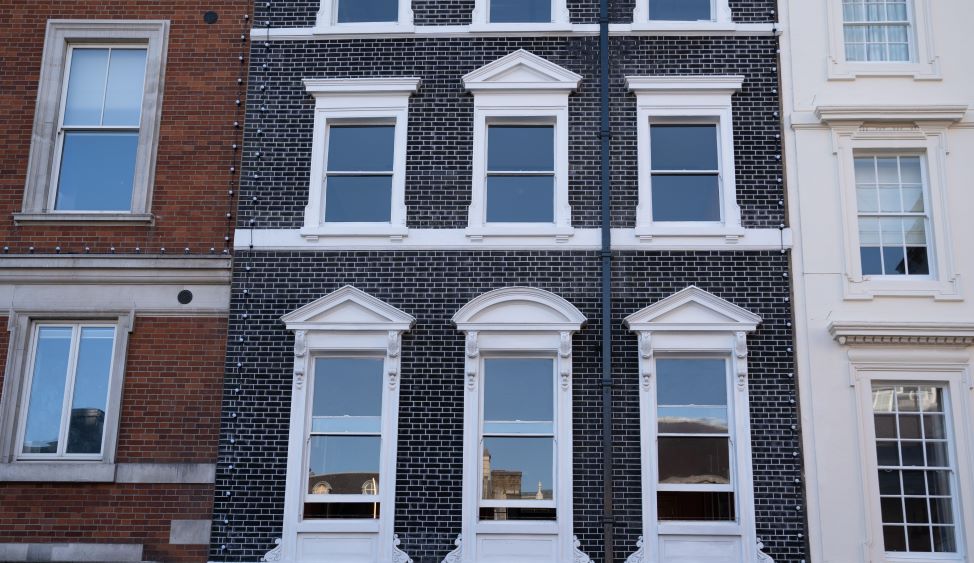For any homeowner in London, the decision to extend, convert, or refurbish a property is an exciting one. It’s a commitment to creating a better living space and enhancing a valuable asset. However, before the creative design process can truly begin, there is a critical hurdle to overcome: navigating the UK’s notoriously complex planning system.
Words like „Permitted Development,” „Planning Permission,” „Building Regulations,” and „Conservation Areas” are often a source of confusion and anxiety. What do they mean? Which rules apply to your project? Making a mistake at this stage can lead to costly delays or, in the worst-case scenario, an order to demolish your newly built extension.
The good news is that the system, while complex, is entirely manageable with the right expertise. This comprehensive guide is designed to demystify the process. We will explain the two main pathways for getting approval for your home extension – Permitted Development and Full Planning Permission – and highlight the special conditions that apply specifically to London properties. Understanding this framework is the essential first step to a successful, stress-free project.
What Exactly Are Permitted Development (PD) Rights?
The most common misconception about property development is that every project needs a formal application to the local council. This is not always the case, thanks to what are known as Permitted Development (PD) Rights.
In simple terms, Permitted Development Rights are a national grant of planning permission given by Parliament. They allow for certain types of building work and alterations to be carried out on many homes without the need to submit a full planning application. The government recognises that minor, common projects like a small rear extension or a simple loft conversion shouldn’t clog up the planning system, provided they fall within strict size and design limitations.
Think of it as a pre-approved checklist from the government. If your project ticks all the boxes and adheres to all the conditions, you have an automatic right to build.
The Importance of Proof: The Lawful Development Certificate (LDC)
While you may not need to ask the council for permission under PD, it is almost always recommended to apply for a Lawful Development Certificate (LDC). An LDC is not planning permission; it is a legally binding document from your local council that confirms your proposed project is lawful and complies with all relevant Permitted Development criteria.
Why is this important?
For Your Peace of Mind: It provides 100% certainty that your build is legal before you spend any money on construction.
For Future Sale: When you come to sell your property, solicitors will require proof that all works were carried out lawfully. An LDC is the official proof they need.
At Reltic BIM, we always recommend securing an LDC for any project undertaken using Permitted Development rights.
Key Permitted Development Rules for Home Extensions (As of 2025)
The rules for PD are detailed and precise. While this is not an exhaustive list, here are some of the most critical criteria that apply to a standard home extension on a house (different rules apply to flats and maisonettes).
For Single-Storey Rear Extensions:
They must not extend beyond the rear wall of the original house by more than 8 metres for a detached house, or 6 metres for any other type of house (e.g., semi-detached, terraced). Note: For extensions over 4m (detached) or 3m (other), a separate neighbour consultation scheme applies.
The height of the extension cannot exceed 4 metres.
If the extension is within 2 metres of a boundary, the eaves height cannot exceed 3 metres.
For Side Extensions:
They can only be single-storey.
The width of the side extension must not be more than half the width of the original house.
The height cannot exceed 4 metres.
General Rules for All Extensions under PD:
They must not cover more than 50% of the land around the „original house” (the house as it was first built or as it stood on 1 July 1948).
The materials used must be similar in appearance to the existing house.
No verandas, balconies, or raised platforms are permitted.
The extension cannot be built forward of the principal elevation (the front of the house).
These rules create a clear framework, but it is the special circumstances, particularly in London, that often require expert interpretation.
When is Full Planning Permission Required?
If your vision for your property extension exceeds the strict limitations of Permitted Development, you will need to apply for Full Planning Permission. This is a much more subjective process where the local council’s planning department will assess your application on its individual merits.
You will typically need Planning Permission if your project involves:
An extension that is larger in depth or height than the PD limits allow.
A two-storey extension that is closer than 7 metres to the rear boundary.
Any project that significantly alters the front of the property.
Using materials that are deliberately different from the existing house (e.g., a modern glass box on a Victorian brick house).
Any development on a property where Permitted Development rights have been removed (more on this below).
The application involves submitting detailed architectural drawings and supporting documents. The council will then assess your proposal against local and national planning policies, considering factors like its impact on neighbouring properties (loss of light, overlooking), its design quality, and its contribution to the character of the area. The statutory timeframe for a decision is typically 8 weeks.
THE LONDON FACTOR
Conservation Areas, Listed Buildings & Article 4 Directions
Nowhere are planning regulations more complex than in London. The desire to protect the city’s unique architectural heritage means that many properties have restricted rights. This is where general advice falls short and local expertise becomes essential.
Conservation Areas
Many of London’s most desirable neighbourhoods are designated as Conservation Areas, which are areas of special architectural or historic interest. If your property is in one, Permitted Development rights are significantly restricted. For example, you cannot build a side extension or add any cladding to the exterior. A two-storey rear extension is also not permitted under PD. This means that many projects that would be straightforward elsewhere in the country will require a Full Planning Application in a London Conservation Area.
Listed Buildings
If your property is a Listed Building (Grade I, II*, or II), it is protected by law. Permitted Development rights do not apply. You will need to apply for Listed Building Consent for almost any work, internal or external, that affects the building’s character as a structure of special interest. This is a separate process from Planning Permission and requires deep expertise in heritage-sensitive design and materials.
Article 4 Directions
An Article 4 Direction is a tool used by a local council to remove specific Permitted Development rights in a defined area. They are often used in Conservation Areas or other sensitive locations to give the council more control over development. For example, a council might use an Article 4 Direction to prevent homeowners from changing their front windows or building small porches without planning permission, in order to preserve the uniform character of a street. It is vital to check if your property is affected by such a direction.
How a Professional Partner Simplifies the Entire Process
Navigating this maze of regulations can be daunting. A key part of our turnkey Design & Build service is to remove this burden from you completely.
Our process always begins with a thorough Feasibility Study, which includes a detailed planning assessment for your specific property. We check the local council’s policies, determine if you are in a Conservation Area or subject to an Article 4 Direction, and advise on the most strategic and likely path to success.
Whether your project falls under Permitted Development (for which we would manage the LDC application) or requires a Full Planning Application (for which we prepare and submit all architectural drawings and documents), we handle the entire process. Our expertise in dealing with London planning departments ensures your application is professional, compliant, and has the highest possible chance of success, allowing you to focus on the exciting design phase.
(Learn more about our seamless Design & Build process.)
Certainty in a Complex System
The UK planning system, particularly in London, is complex for a reason: it aims to balance the rights of homeowners to improve their properties with the need to protect the character of our shared environment.
While the rules may seem formidable, they are not a barrier to creating the home you desire. With an expert partner who understands the regulations inside-out, the planning phase becomes a predictable and managed part of the journey, not a source of stress. This expertise is the foundation upon which every successful London home extension is built.
Ready to Discuss Your Project's Potential?
If you are considering a home extension and are unsure about the planning requirements for your property, contact our team today. Our initial consultation includes a preliminary feasibility check and a clear discussion about the likely planning route for your vision.
Contact Us for Your Residential Project
Ready to start your project with complete clarity and confidence? Get in touch with the Reltic BIM team today to see how our process delivers better results with a guaranteed fixed price.
📞 Contact Us Now:
Email: office@relticbim.co.uk
Phone: 020 3576 2851
Contact Form
🌟 Explore Our Work:
See our completed projects and discover how Reltic BIM can help you achieve your dream home. Visit our projects page.







